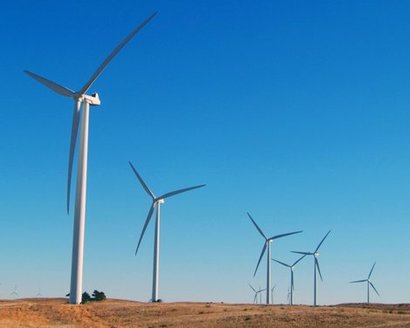
Flagged by the National Energy System Operator as an essential element in achieving the Government’s Clean Power 2030 ambition, Eastern Green Link 1 (EGL1) is a high voltage electricity superhighway able to transport 2 gigawatts of homegrown wind generated electricity between Torness, East Lothian and Hawthorn Pit, County Durham. Most of the 196km cable will be under the North Sea, with the remaining 20km of cables underground linking the cable to substations and converter stations in Scotland and England.
The project will reduce Great Britain’s reliance on volatile international gas markets by further harnessing the power of homegrown North Sea wind. NESO’s recent Clean Power 2030 Report has also shown that the project will deliver annual saving of over £870m by reducing the need to compensate British wind generators who are currently asked to turn off production during times of high wind due to lack of grid capacity. This in turn will help drive down consumer bills.
As part of its mission to rapidly upgrade the energy system with a minimum cost to customers, Ofgem has identified over £43m of savings which have been cut from the project costs without impacting delivery or quality. Communities that host the infrastructure in Scotland and North-East England are also set to benefit from a £7.9m social value and community benefit fund.
Beatrice Filkin, Ofgem Director of Major Projects, said, “Today's announcement takes us another step closer to achieving Great Britain’s 2030 Clean Power ambitions. Our fast-track process provides developers with access to some initial upfront funding from the projected budget, so they can secure the supply chain commitments needed to secure the sought-after materials to deliver this project as soon as possible.”
EGL1 is the second of 26 critical energy projects, worth an estimated £20billion to successfully complete Ofgem’s new fast track Accelerated Strategic Transmission Investment (ASTI) framework. ASTI speeds up the funding process for projects by up to two years, allowing electricity generated by offshore wind to be delivered to British customers sooner.
The project is being developed by a partnership between SP Energy Networks and National Grid Electricity Transmission.
National Grid has published research that found that there will be an estimated 400,000 job opportunities for a net zero energy workforce by 2050, including around 150,000 jobs anticipated in Scotland and the North of England, some of which are expected to support the delivering of Eastern Green Link 1 and Eastern Green Link 2.
Accelerated Strategic Transmission Investment (ASTI)
Delivering Net Zero requires a huge amount of new infrastructure. The Government’s ambition is to build 50GW of offshore wind to be constructed by 2030.
This new infrastructure is needed to carry electricity from offshore sites to homes and businesses.
The Accelerated Strategic Transmission Investment (ASTI) framework has been designed to fast track strategically important energy transmission projects.
It streamlines the onshore transmission regulatory approval process and ensures robust consumer protection to allow network infrastructure to be built faster, accelerating build times by up to two years and unlocking capital investment to meet the Government’s target of 50GW of offshore wind capacity by 2030 and a decarbonized power grid by 2035.
A total of 26 projects have been identified by Ofgem for progression under the ASTI process.

